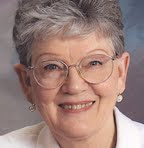WRITTEN BY HIS FATHER, DARIUS ALBERT CLEMENT
 |
| The 82-acre farm near Fairview, Utah |
The farm had been producing a lot of wild oats and the granary was about half full of grain with a high percentage of wild oats mixed with it. A little spring ran by the barn and on down through the center of the farm finding its way out on the west side. I surveyed a ditch to get water to my garden up by the house. I had enough to put in one row at a time the first year. The second year I could water 2 or 3 rows. The water kept increasing until I had plenty of water for planting a half acre.
 |
| One of the field teams. |
When my youngest son Raphael married, he helped me on the farm. He married Pearl Olsen in 1923. We tilled the soil, got rid of the wild oats, and raised heavy crops of grain. The hay we planted would grow as high as the backs of horses. Red-top canary grass and timothy was so heavy we couldn't rake it after it was cut. We filled a 40 ton barn and built several great stacks of hay outside.
I leased the plowed part of the farm to the sugar factory in Moroni, Utah for two years for $1,200 per year. When they went broke we put all of the plowed ground into wheat for a couple of years. We were ready to harvest this heavy wheat crop in the fall of 1924.
 |
| A haystack on the farm. |
Don was thirteen months old when their second child Bud LaVon was born 5 December 1925. He was born in the Fairview farmhouse. Now Raphael had two little boys. Pearl relates that times were hard on the farm without the conveniences of electricity, until about 1940 when they got electricity in the outlying farms. They used coal oil lamps, and the house had no indoor plumbing. They carried their water from a large spring about 100 yards from the house, all uphill. For large amounts, sometimes it was transported on the horse-drawn stoneboat. They would fill 5 and 10 gallon milk cans which would last most of the day except wash days, and saturdays for bathing in the tin tub. It was spring water and very good.
Additional information from Pearl Clement: The farm included 25 acres of pasture for milk cows. It was irrigated with water from a spring east of the farmhouse and with water from a nearby pond. The spring provided culinary water for the family—water that was carried up the hill to the house in milk cans, placed on a stone-boat, a platform on wooden skids pulled over the ground by a horse.
Additional information from Pearl Clement: The farm included 25 acres of pasture for milk cows. It was irrigated with water from a spring east of the farmhouse and with water from a nearby pond. The spring provided culinary water for the family—water that was carried up the hill to the house in milk cans, placed on a stone-boat, a platform on wooden skids pulled over the ground by a horse.

No comments:
Post a Comment